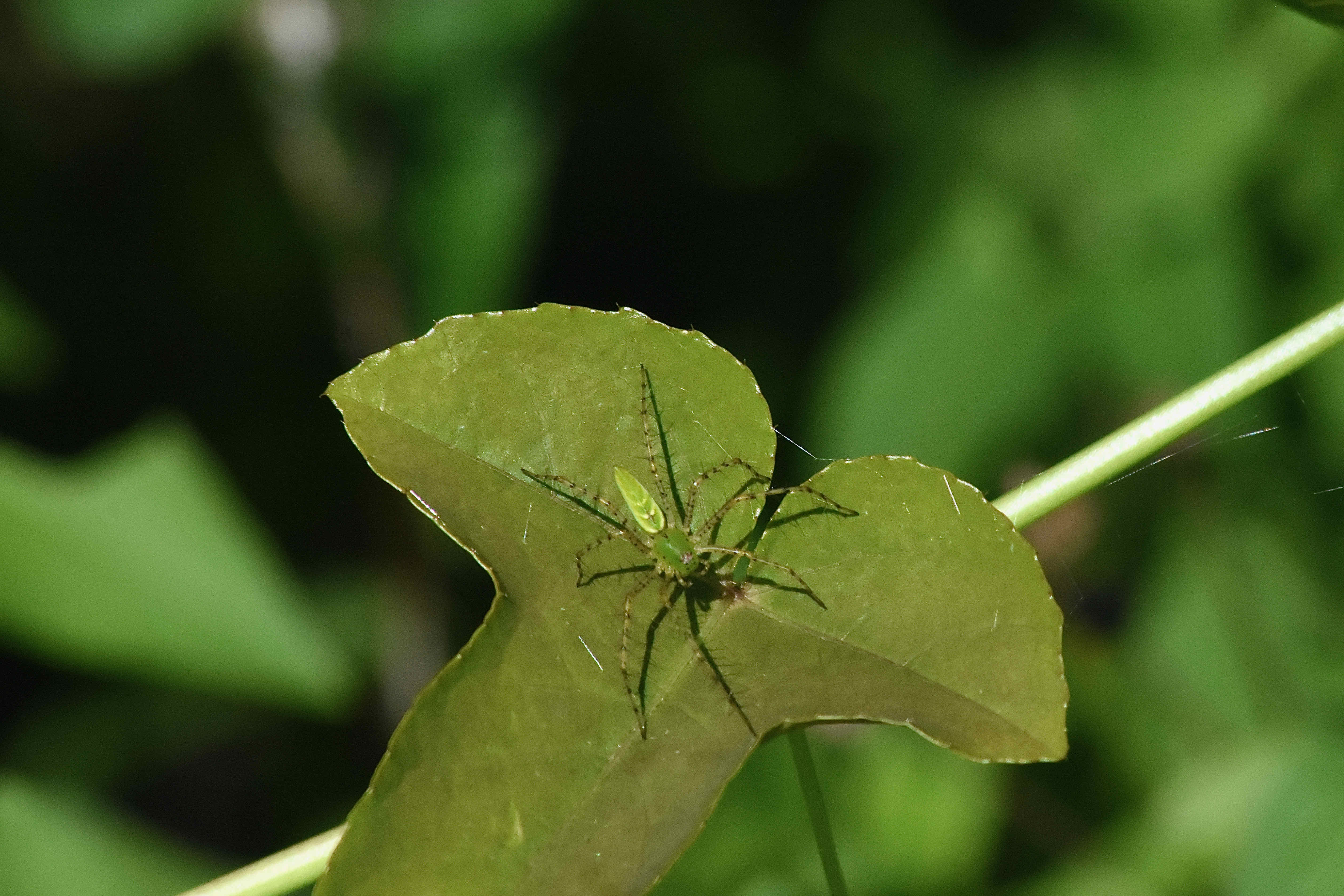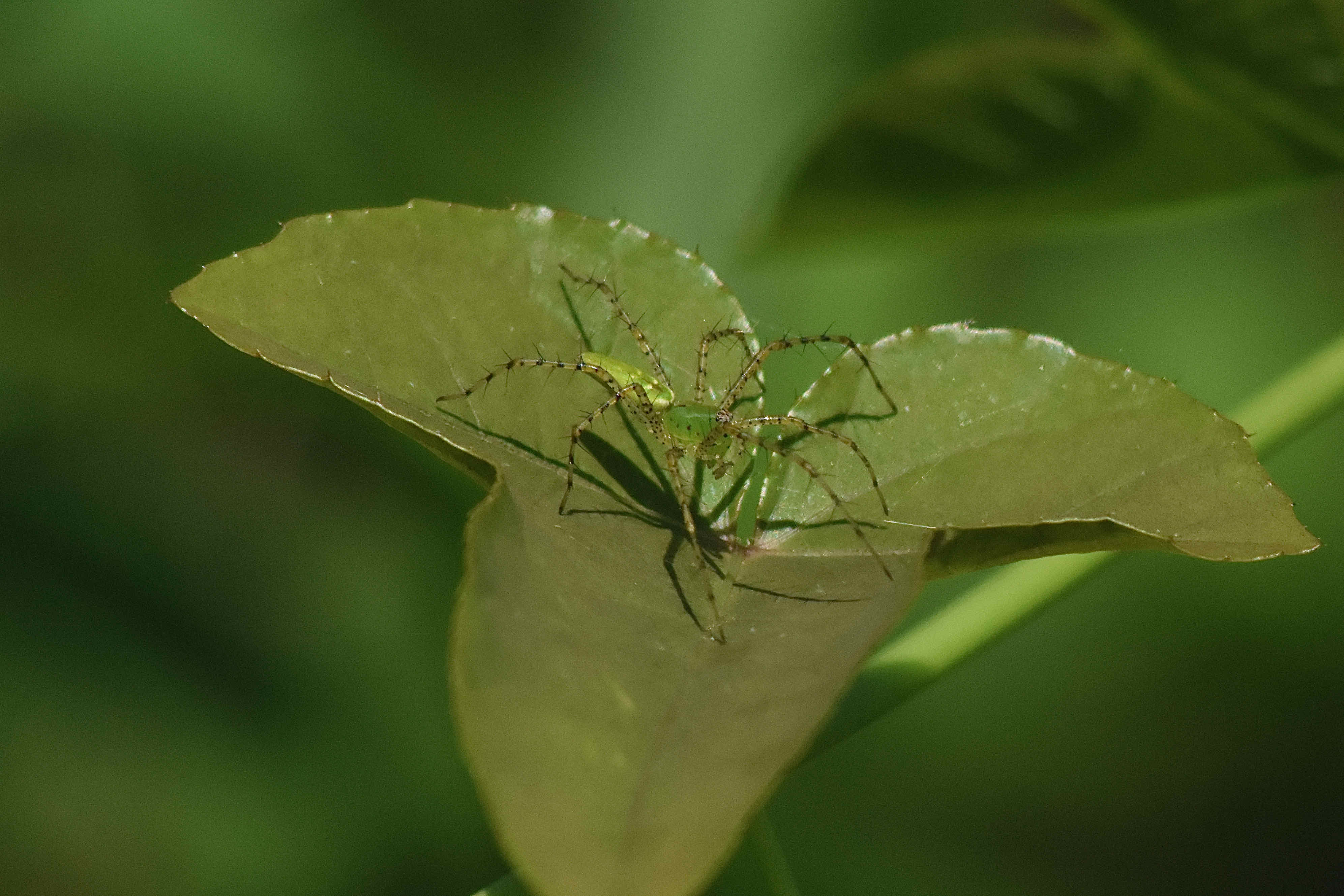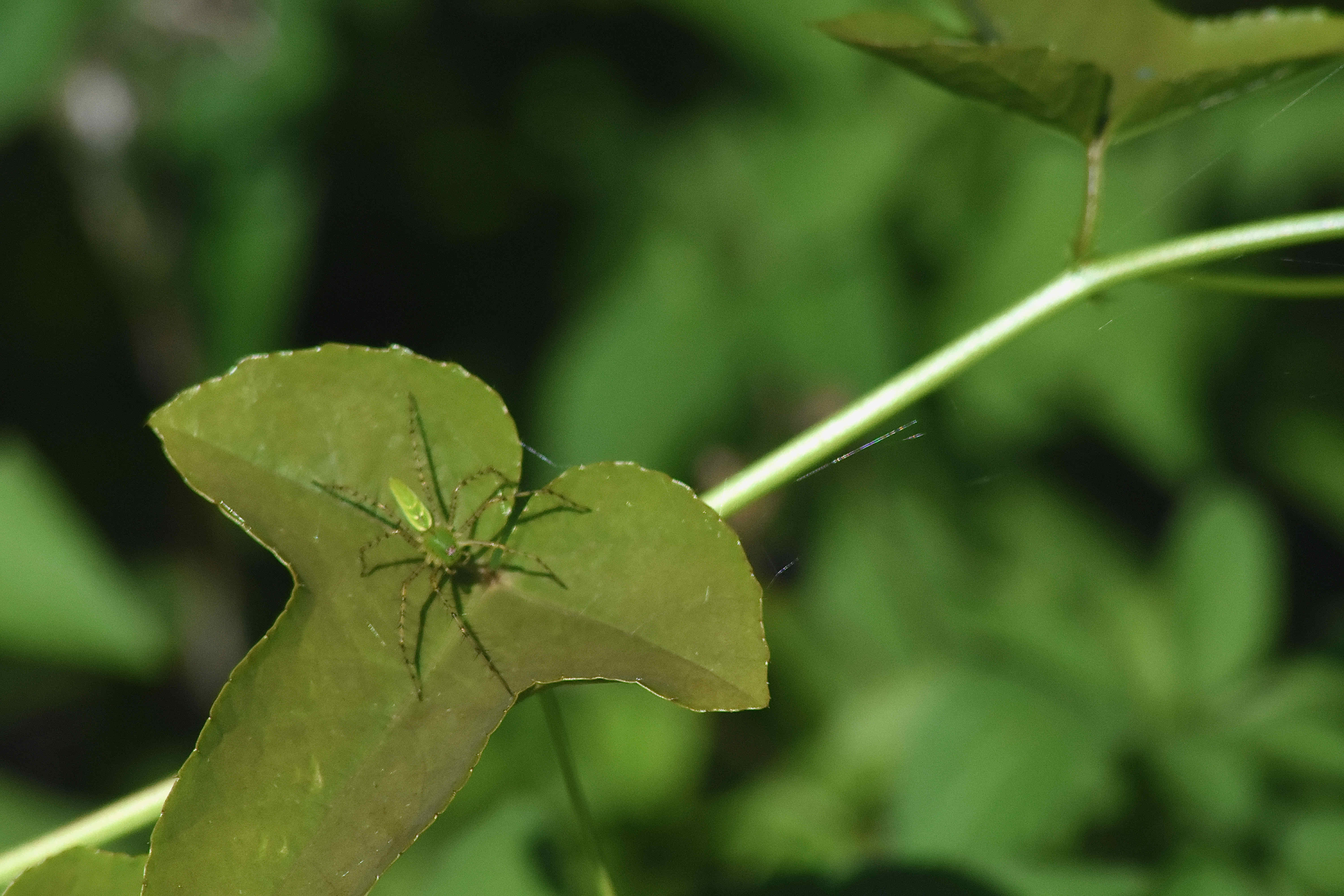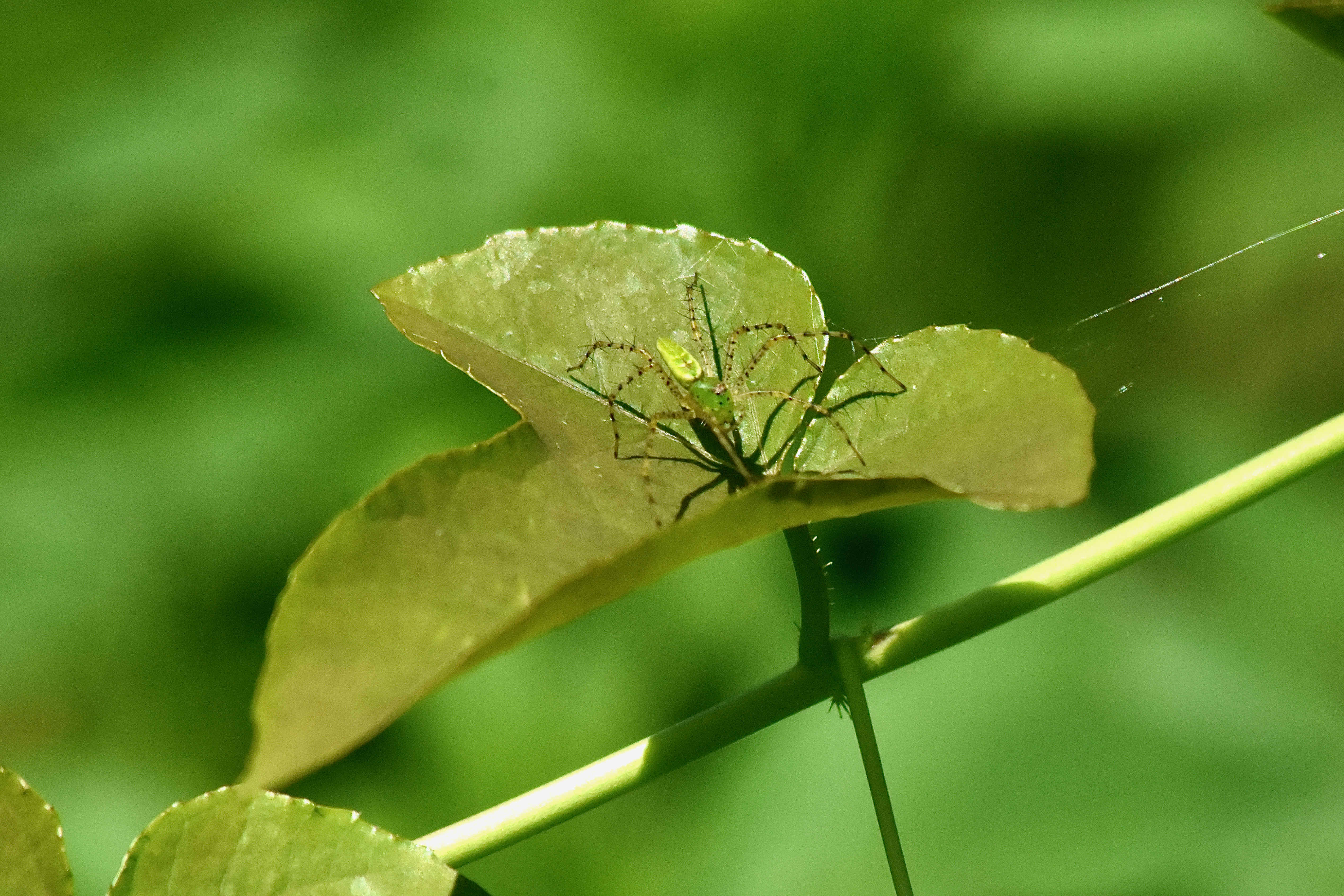
Green linx spider, photographed at Royal Palm Beach Pines Natural Area, Royal Palm Beach, Palm Beach County, in July 2016.
This little bugger could be our secret weapon in the war against other, more destructive little buggers. Or maybe not.
This potenitally beneficent bugger is the green linx spider, Peucetia virdans, one of the most common spiders found in the wilds of Florida. It is the largest linx spider in North American. It rarely bites humans, but it has an affinity for insects. In fact, it is one of the major predators of the six-legged creatures in the wild. Which would make it seem like a friend of farmers everywhere as it goes to town on crop-eating bugs. It loves to dine on such pests as the corn earworm moth, the cotton leafworm moth and cabbage looper moths. Not only does it eat the adults, it eats their larvae.
So throw a bunch of them in a field and let them have at it, right? Wrong, as you might suspect. Green linx spiders also love to eat honey bees, beneficial wasps and flies that either pollinate crops or attack destructive insects.
According to the University of Florida, there's still some hope that it can be useful on certain crops.
Green linx spiders are fairly easy to identify if for no other reason than their green and yellow coloring. Females go about a half inch to an inch long, males a bit smaller. The upper part of the body is green, the lower is yellow-green. The legs are long in relationship to the body, yellow and covered with dark spines — a key identifying trait of linx spiders.
Green linx spiders are daytime hunters, running and jumping — yes jumping — from leaf to leaf with great speed and agility in pursuit of a meal. They also have eight eyes that give them superb vision, an important attribute for a hunter. And while they do spin silk, they don't make webs to capture their prey. Instead, they hunt mostly by ambush, waiting for a tasty morsel to stop by for dinner. They also spit venom from their fangs. The stuff isn't likely to harm a human unless said human is unlucky enough to get hit in the eye. And while irritating, the stuff doesn't seem to do any permanent damage. The theory is the spitting, or spraying, is used as a defensive measure rather than for capturing prey. Green linx spiders hang out in low shrubs and leafy plants, like the passion vine our guy, or more likely girl, is sitting on. They're found throughout the southern tier of states and into Mexico, Central America and the Caribbean.
They have one generation a year. Depending on geography, females will lay one egg sac in the fall; farther south, they'll lay a second. Typically, each sac will have about 200 eggs, which will take about two weeks to hatch; the "postembryo" spiderlings are helpless and remain in the egg sac for two more weeks, give or take, where they will molt into a more developed stage. At this point, mom, who has guarded over her young all this time, tears open the sac. The spiderlings go through as few as six and as many as eight different stages, or instars, before becoming fully mature.
Green lynx spiders are member of Oxyopidae, the lynx spider family.



